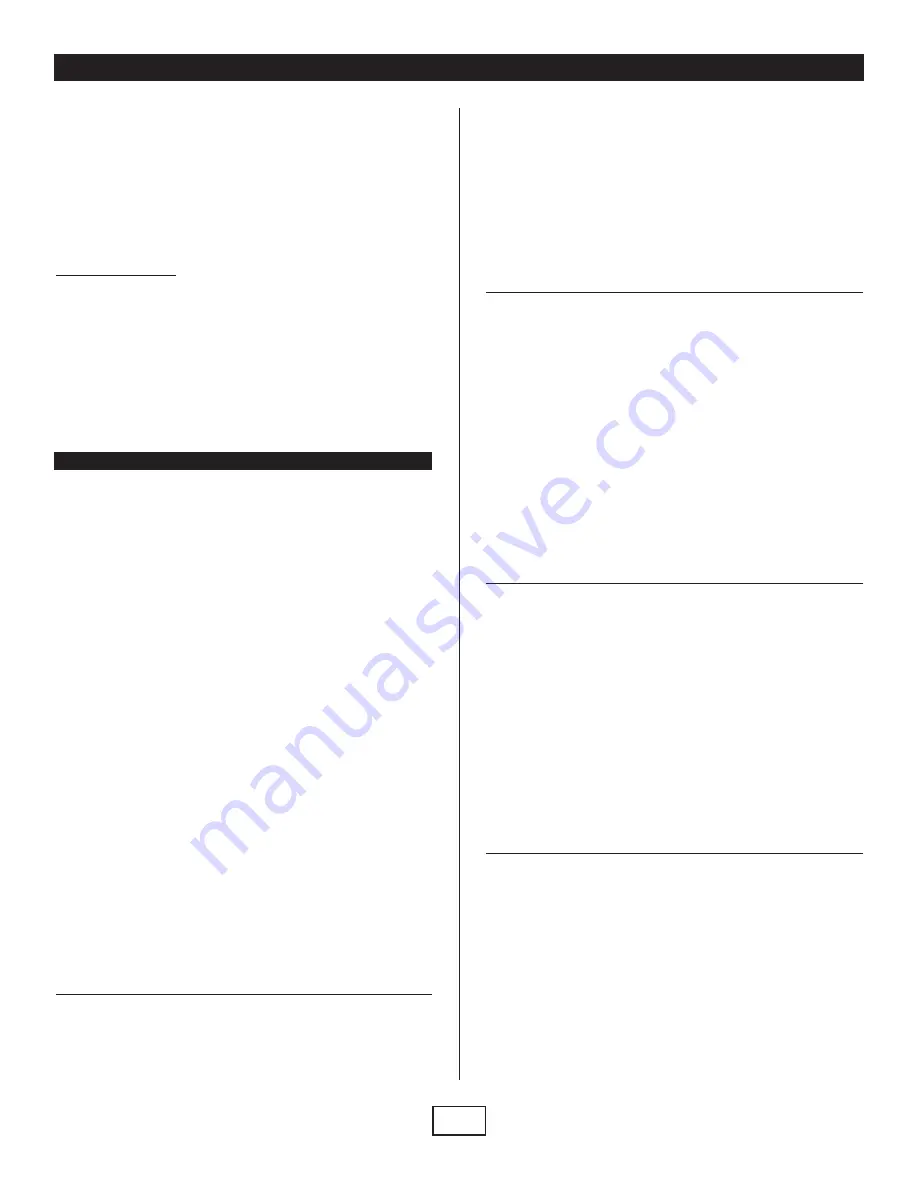
sented and a specially coded software file is selected for download to the gui-
tar. This is a special SysEx file (.syx) and can be downloaded from the
MidiAxe™ website (www.midiaxe.com). Use of any other .syx file will cause
overwriting of the internal MidiAxe program memories and should never be
attempted. If this should happen, use the Recovery button and then Upgrade
with the appropriate software SysEx file. The software upgrade takes a cou-
ple of minutes to complete and the user should never remove power during
this process.
Recovery Button
The Recovery button should only be used as a result of a corruption of the
MidiAxe™ system memory. In this case, this button is used to put the
MidiAxe™ system into a known state prior to upgrading the software as a way
to restore the internal memory of the system. Normally this is only used by
the factory to set up the MidiAxe™ system the first time, and would not be a
control frequently used by a user. It is only provided as a fail safe way to
recover a crashed system should that occur.
SYSEX Specification:
The user may communicate with the MIDIFly for the purposes of upgrading
software and modifying the user settings. This section will set forth the details
for these functions.
Software Upgrade
The software upgrade feature is accomplished by sending a series of Sysex
messages to the MIDIFly. The messages are contained in a single file that
can be downloaded from the MIDIFly website. The software that sends these
messages must insert a delay of at least 150ms(milliseconds) between each
message.
Changes to User Settings
The MIDIFly comes programmed with default settings that are optimal for a
wide range of users. Through the use of Sysex messages the user may mod-
ify these settings. The default settings may be restored at any time through a
single command.
The SYSEX Details
All values are expressed in hexidecimal format, indicated by '0x' preceding an
8 bit value (1 byte). Each Sysex message must have the following preamble
(first 4 bytes).
Byte 0:
0xF0
Sysex Status
Byte 1:
0x00
Manufacturer's ID
Byte 2:
0x01
Manufacturer's ID
Byte 3:
0x25
Manufacturer's ID
SINGLE CHANNEL MODE, Channel number select
Byte 4:
0x27
Byte 5:
0x00
Byte 6:
0x00
Byte 7:
0x00
Byte 8:
0x00
Byte 9:
0x00
Byte 10:
0x01
Byte 11:
0x00
Byte 12:
0x00
Byte 13:
0x00
Byte 14:
0x0A
Byte 15:
0x03
Byte 16:
0x02
Byte 17:
0x00
Byte 18:
0x00
Byte 19:
0x00
Byte 20:
0x00
Byte 21:
0x00
Byte 22:
Channel #
Selected Channel Number (0x00...0x0F)
Byte 23:
0xF7
End of Sysex
MULTI CHANNEL MODE, Channel number select for String 1
Byte 4:
0x21
Byte 5:
0x00
Byte 6:
0x02
Byte 7:
0x00
Byte 8:
0x00
Byte 9:
0x00
Byte 10:
0x01
Byte 11:
0x00
Byte 12:
0x00
Byte 13:
0x00
Byte 14:
0x02
Byte 15:
0x09
Byte 16:
0x0D
Byte 17:
0x00
Byte 18:
Channel #
Selected Channel Number (0x00...0x0F)
Byte 19:
0x00
Byte 20:
0x00
Byte 21:
0x00
Byte 22:
0x00
Byte 23:
0xF7
End of Sysex
MIDI CONTROLLER NUMBERS
MULTI CHANNEL MODE, Channel number select for String 2
Byte 4:
0x22
Byte 5:
0x00
Byte 6:
0x02
Byte 7:
0x00
Byte 8:
0x00
Byte 9:
0x00
Byte 10:
0x01
Byte 11:
0x00
Byte 12:
0x00
Byte 13:
0x00
Byte 14:
0x00
Byte 15:
0x09
Byte 16:
0x0D
Byte 17:
0x00
Byte 18:
Channel #
Selected Channel Number (0x00...0x0F)
Byte 19:
0x00
Byte 20:
0x00
Byte 21:
0x00
Byte 22:
0x00
Byte 23:
0xF7
End of Sysex
MULTI CHANNEL MODE, Channel number select for String 3
Byte 4:
0x23
Byte 5:
0x00
Byte 6:
0x01
Byte 7:
0x00
Byte 8:
0x00
Byte 9:
0x00
Byte 10:
0x01
Byte 11:
0x00
Byte 12:
0x00
Byte 13:
0x00
Byte 14:
0x02
Byte 15:
0x09
Byte 16:
0x0D
Byte 17:
0x00
Byte 18:
Channel #
Selected Channel Number (0x00...0x0F)
Byte 19:
0x00
Byte 20:
0x00
Byte 21:
0x00
Byte 22:
0x00
Byte 23:
0xF7
End of Sysex
P
a
r
k
e
r
®
M
I
D
I
F
l
y
™
7
SYSEX Specification
















